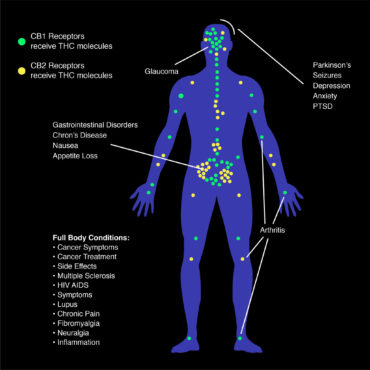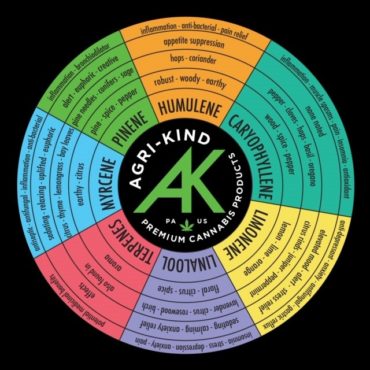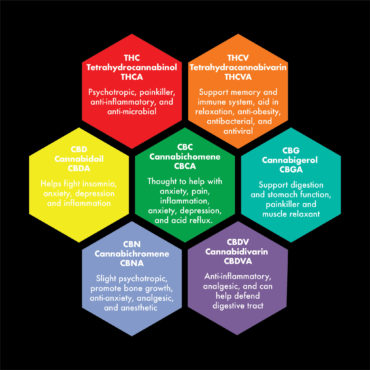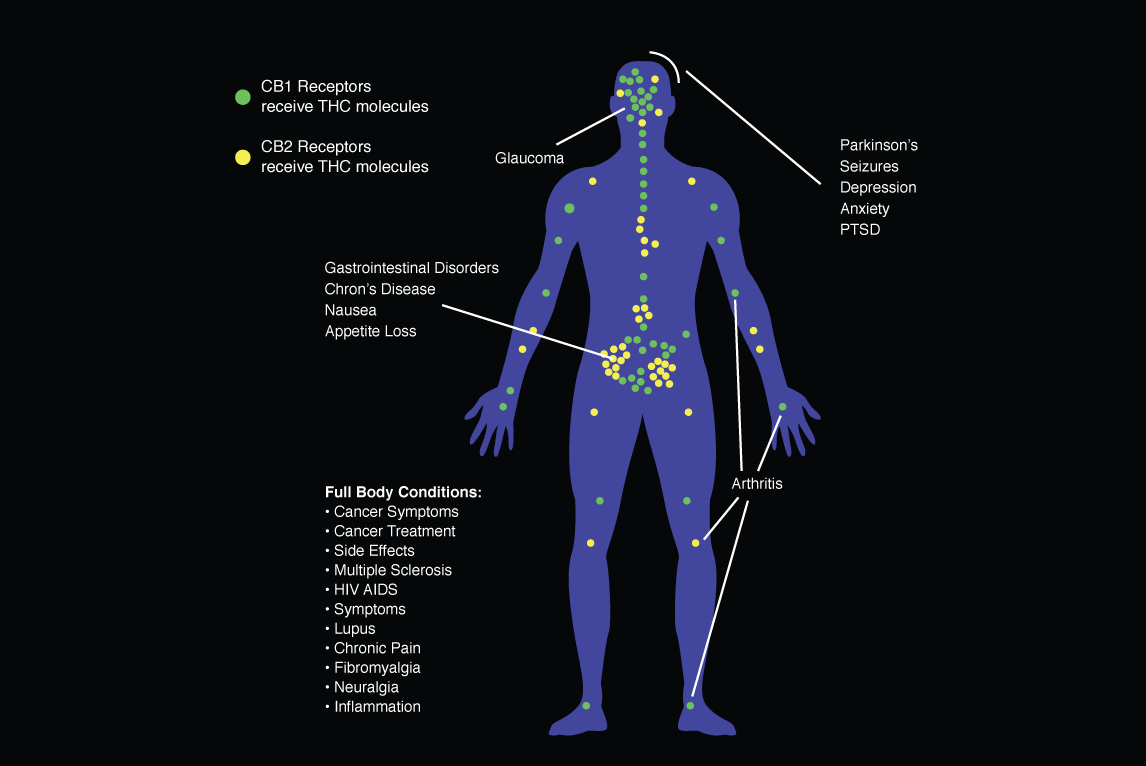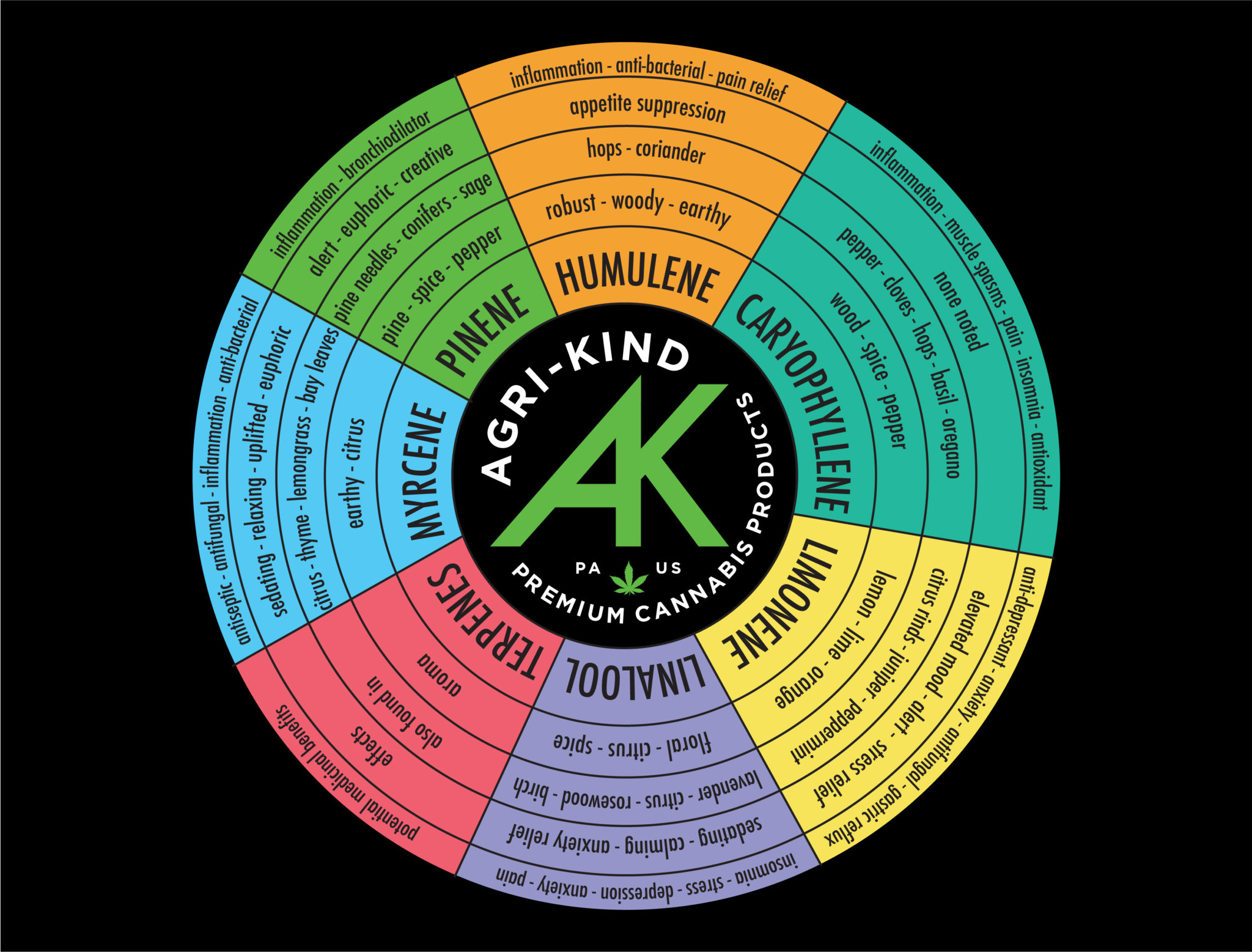Cannabis 101
Cannabis is a flowering plant with a multitude of purposes. Cannabis seeds can be used for food (Hemp seeds). Its stalks can be used for many industrial purposes: paper, clothing, rope, building material, etc. and, cannabis leaves, flowers and roots can be used for medicinal purposes.
Cannabinoids are the chemical compounds secreted by cannabis flowers that provide relief to an array of symptoms including pain, nausea, anxiety and inflammation. Cannabinoids work by imitating compounds our bodies naturally produce, called endocannabinoids which activate to maintain internal stability and health.
When cannabis is consumed, cannabinoids bind to receptor sites throughout our brain (CB-1) and body (CB-2). Different cannabinoids have different effects depending on which receptors they bind to, i.e. Tetrahydrocannabinol (THC) binds to receptors in the brain whereas (CBN) Cannabinol has a strong affinity for CB-2 receptors located throughout the body. Different types and levels of relief are achievable depending on the cannabis products and their cannabinoid profiles.
Cannabis contains more than 85 types of cannabinoids, many of which have potential for medical use. Specific products and strains have been developed to deliver different cannabinoids to help treat certain symptoms.


